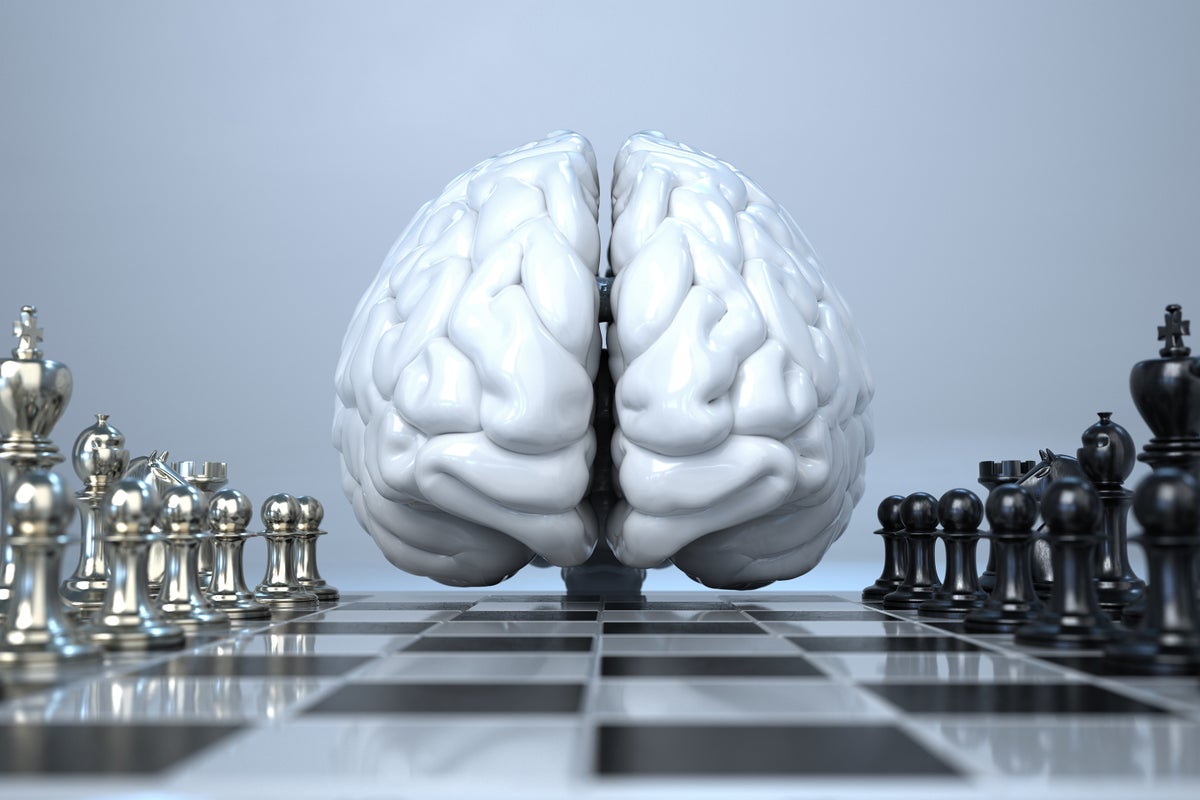Last year, when doctors told a patient that the headaches he was experiencing were due to a highly invasive brain tumor called a glioblastoma that could only be removed during a complex surgery, he had one very specific request.
He wanted the people who would be slicing the cancerous tissue out of his brain (from an area just to the left of the crown of his head) to make sure “to preserve a relevant aspect of his identity—his ability to play chess,” a paper in the journal Cortex reported this month.
The man, a then-45-year-old computer programmer, was identified only as “AB.” He had been playing the game as a hobby for 25 years and had achieved an Elo rating of 1,950, which is just one level below expert in the chess world.
On supporting science journalism
If you’re enjoying this article, consider supporting our award-winning journalism by subscribing. By purchasing a subscription you are helping to ensure the future of impactful stories about the discoveries and ideas shaping our world today.
AB made his request to conserve his chess skills to one of his surgeons, Andreu Gabarrós, head of neurosurgery at Bellvitge University Hospital in Spain, which is affiliated with the University of Barcelona. Gabarrós has a reputation for going out of his way for his patients, a commitment that sometimes carries over into his after-work activities. As leader of a band called Dorigen, he has recorded an album with 10 tracks—one choral number and nine solo songs. Each of the latter was composed for a different patient from whom he had removed a brain tumor while trying to protect areas needed to sing or play an instrument.
Upon hearing AB’s request, Gabarrós contacted his neuroscientist colleagues at the university in early March 2023. He asked if they could come up with a plan to map AB’s brain before and during the procedure, which would help his surgical team spare the brain tissue AB needed to return to his passion after recovery.
Two researchers at the university, part of a group led by cognitive neuroscientist Antoni Rodríguez-Fornells, began a mad dash in the ensuing weeks to develop a chess-preserving surgical protocol that Gabarrós’s team could use for the March 27 procedure. “We had a small amount of time to prepare everything,” Rodríguez-Fornells says.
The team combed the existing scientific literature on the topic and scanned AB’s brain using functional magnetic resonance imaging (fMRI) to isolate the regions linked to his own individual chess performance.
The most critical phase of AB’s chess brain preservation—and the one that turned out to be the most insightful—would have to wait until the surgery itself began. Surgeons performed a craniotomy, removing a piece of skull to expose a portion of AB’s left superior parietal lobe while he was awake. Next they touched a live electrode to different spots on the surface of his cerebral cortex, asking him to answer questions and complete tasks in order to determine whether his cognitive abilities remained intact at the targeted spot, where the current shuts down or triggers a particular action.
This procedure, called electrical stimulation mapping (ESM), has roots in experiments dating back to the 19th century. It notes whether a mild electrical jolt impairs language or produces unintentional motor movements (a sideways twitch of AB’s mouth, in one instance). This let the surgeons find sites they needed to avoid—such as those involved in AB’s three languages, Spanish, Catalan and English. Speech was altered or curtailed completely when these sites were in contact with the electrode.
As this painstaking process proceeded, the surgeons also applied current across a portion of the exposed cortex to look for chess-related areas, eventually arriving at AB’s supramarginal gyrus (SMG), a brain area that plays a role in various tasks ranging from language to memory to processing rules. When the electrode blocked neural activity in this area multiple times, AB could not tell when shown an image of pieces in play on a chessboard whether an indicated next move was permissible; this revealed a chess-related spot in the cortex that had not been found in previous brain-imaging studies of other players. The discovery was noted and factored into the surgical plan. “This is the main aim of the procedure: to be able to detect this point and avoid it,” says computer scientist Xim Cerda-Company, one of the co-authors of the study.
One week after surgery, AB experienced severe language and motor difficulties because of a bleeding complication, making it impossible to test whether his chess skills were intact. Four months later, when the researchers could finally make this assessment, his abilities were still there—but he had slightly slower responses in some of the more complex chess-related tasks that they tested.
The fact that this study involved just one patient makes it difficult to generalize from the results. But it does demonstrate a new approach to tackling the challenge of preserving cognitive skills while removing as much tumor tissue as possible. As the Cortex paper noted, the experimental protocol helped with “identification and preservation of the functional brain structures involved in chess performance.”
Rodríguez-Fornells’s team is now preparing another paper about an earlier surgery that used a similar approach—this one designed to protect computer programming skills. “With the neurosurgeon and team, we developed a new protocol for testing the language of coding in the operating room using JavaScript,” Rodríguez-Fornells says.
Other experts are intrigued. Adrià Rofes, an assistant professor of neurolinguistics at the University of Groningen in the Netherlands, who did not contribute to the Cortex study, says this work “goes a bit beyond some of the approaches we see in some media, and even in some scientific publications, where surgical teams seem to ‘throw’ tasks at patients—for example, playing violin or singing opera.” The University of Barcelona team, Rofes says, went a step further. “Breaking down tasks into functions [visual search, rule retrieval and checkmating] is essential to understand what exactly electrical stimulation does during surgery,” he adds.
Another perspective questions whether getting ready for a surgery by tying specific brain areas to particular tasks, such as chess play or computer programming, might be overkill. “Someone will ask to continue to be able to do knitting, someone else will ask be able to play the violin, and so on,” says Emmanuel Mandonnet, a professor of neurosurgery at the University of Paris Cité in France. “So it’s not the best strategy because you will have to invent protocols for tasks like chess that are specific for every patient.” Mandonnet was a reviewer for the Cortex paper and has performed numerous surgeries on awake patients.
Mandonnet suggests that simply asking a patient to perform a carefully selected set of standard cognitive tasks during an awake surgery (repeating a string of six numbers backward, for example) may suffice to identify areas that need to be left alone during the operation. Visual search abilities, examined in the chess surgery protocol, may share some of the same neural processes as other tasks such as knitting. But Mandonnet acknowledges that there may be exceptions. A relatively complex task, such as retrieving a rule about whether a particular chess move is legal, may not be amenable to a more generalized approach.
Mandonnet pointed to a study published this year in Neurosurgical Focus by researchers at the University Hospital of Montpellier in France. It found that having a musician patient play an instrument during an awake surgery was not necessary to spare areas linked to the patient’s musical skills. Instead the researchers had patients do several things at the same time: moving an upper limb while talking and switching between three different languages. The paper concluded that these tasks recruit motor, auditory and other cognitive processes, which are also activated when playing an instrument—and that avoiding damage to the involved areas during surgery was enough to keep from compromising a musician’s ability to sing or play.
Whether or not performing chess moves becomes a staple of some awake surgeries, the Cortex study did meet one of its major goals. After AB’s surgery, he reported to Rodríguez-Fornells’s team that he had been able to maintain his coveted Elo rating—the kind of achievement that might inspire Gabarrós to write a new song.


























































